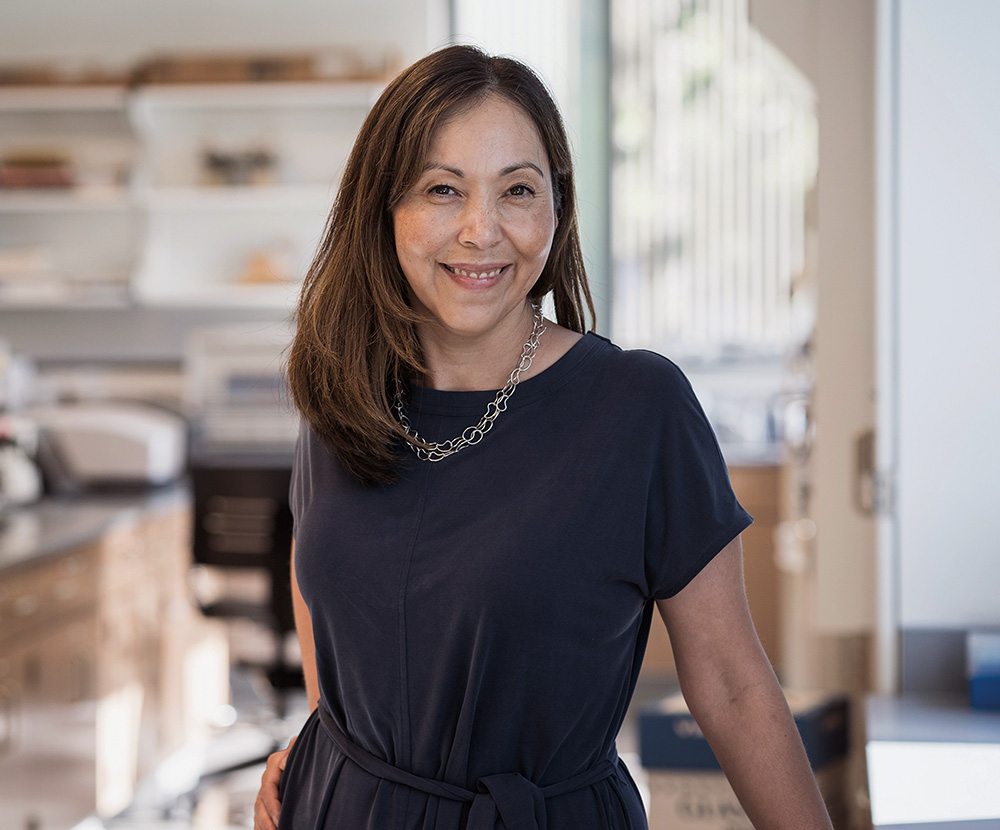Cancer-Cell Mystery Solved
The first time Marcia Haigis ’96 saw mitochondria — the cell structures or “organelles” that generate the energy that powers the body’s cells and control cell division and growth — she was struck by their beauty and elegance.
When it comes to cancer cells, however, all the work done by mitochondria is devoted to helping tumors survive and grow — elegant organelles with a destructive purpose. That growth generates a lot of cellular waste, including ammonia. What cancer cells do with that ammonia became a puzzle that Haigis was determined to solve.

Marcia Haigis ’96
Haigis was recognized for her research in 2023, when she was awarded the Samsung Ho-Am Prize in Medicine.
“It’s always been a personal dream to work on a puzzle that, when solved, has the potential to contribute to human health,” Haigis said during her acceptance speech. “Working on mitochondria offered a piece of that puzzle.”
Similar to the Nobel Prize, the Ho-Am Prize is awarded each year to individuals across disciplines who “have contributed to academics, the arts and social development, or who have furthered the welfare of humanity through distinguished accomplishments,” according to the Ho-Am Foundation.
Using new technology like mass spectrometry, Haigis and her team were able to trace the lifecycle of ammonia in cancer cells. They were surprised to see the cells reuse what has commonly been thought of as a waste product.
“It made sense that tumor cells wouldn’t just waste and throw away all the ammonia that they generated and would instead scavenge it and co-opt cellular pathways to take advantage of it,” she says.
Haigis and her team were intrigued to find this behavior across a number of other cancer cell types, including brain and breast cancers.
Identifying ammonia as a fuel source in cancer cells opens up avenues for studying new potential treatments — and the roots of Haigis’ research can be found at UNH.
It was in Professor Rick Cote’s biochemistry labs and classes that she learned fundamental skills and how to design experiments and analyze data. “It was a very supportive department,” she says. “There was a lot of scientific freedom. I could see for the first time how the lessons I was learning played out in the lab and helped solve scientific puzzles.”
When Haigis joined Cote’s lab in 1994, Cote says he was “immediately impressed” with her enthusiasm for taking on challenging projects. Her work in Cote’s lab led to a first-author publication in the Journal of Biological Chemistry — a distinction among Cote’s students that only she holds. “I am so proud, but not surprised, of what she accomplished in my lab, as well as her substantial achievements at Harvard Medical School,” Cote says.
UNH also helped set the stage for Haigis’ personal life. She and her husband, Kevin ’96, met during an introductory biology class in Spaulding Hall and bonded over long study sessions and hours in the lab. “We always liked to go to the Dairy Bar and get ice cream,” she recalls. “It’s something we still do today when we return to UNH with our three children.”